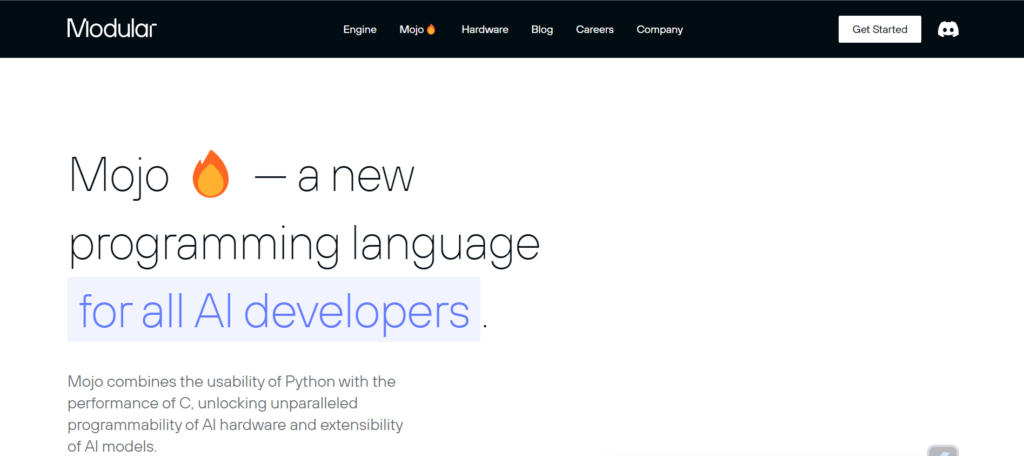In the vast world of programming languages, Mojo stands out as a powerful and versatile tool that empowers developers to create efficient and robust applications. Mojo programming language, or Mojolicious, is an open-source, Perl-based framework that simplifies web development and provides a comprehensive set of tools for building modern, scalable, and high-performance applications. In this article, we will explore the key features and advantages of Mojo, highlighting its unique contributions to the programming landscape.
Mojo programming language, with its lightweight and modern architecture, powerful web framework, asynchronous capabilities, comprehensive testing tools, and extensibility, offers developers a compelling solution for building efficient and scalable applications. By prioritizing simplicity, Mojo enables developers to write clean and maintainable code, accelerating development cycles and reducing overhead.
As the Mojo ecosystem continues to grow, developers can leverage its broad range of plugins and extensions to enhance their applications further. Embracing Mojo empowers developers to embrace the future of web development, unlocking new possibilities and delivering exceptional user experiences.

Why MOJO, When Python Is There?
No Doubt, Python has gained significant popularity due to its versatility, readability, and extensive ecosystem. Python’s elegant syntax and clear structure make it accessible to beginners while remaining powerful enough for complex projects. The language’s vast standard library and third-party packages empower developers to tackle a wide range of tasks, from web development to data analysis, machine learning, and scientific computing. Python’s emphasis on code readability and its supportive community make it an excellent choice for collaborative projects and learning resources.
But, In comparison to languages like C++, Python is hundreds of times slower. Because of this, using Python for the inner loops, the areas where efficiency is most crucial are unfeasible. Python has a secret weapon: it can call out to code written in other programming languages. Therefore, Python programmers are taught to use wrappers for C, FORTRAN, Rust, etc. code instead of Python to implement performance-critical portions. Python programmers can feel perfectly at home using highly optimized numeric libraries since libraries like Numpy and PyTorch offer “Pythonic” interfaces to high-performance programming.
Even when a faster-compiled implementation language is used for a library, there will always be performance issues. The lack of “fusion” is a significant problem because it causes a lot of overhead when calling several built functions at once because data must be translated between Python and C formats and back again. To call these “fused” versions from Python, we must instead create special “fused” versions of frequently occurring function combinations (such as a linear layer followed by a rectified linear layer in a neural net).
The Mojo doc claims that Python’s problems are more serious and have a particular effect on the AI industry. Because Python is unable to solve every problem that applied AI systems face, Mojo was created. Mojo is a programming language that combines the performance of C with the usability of Python.
So many attempts have been made over many years to develop programming languages that are simple, flexible, quick, and simple to use, but with little success. But Modular appears to have managed it in some way.
Features Of MOJO
Asynchronous and Non-blocking I/O – Mojo embraces an asynchronous and non-blocking I/O model, which makes it particularly well-suited for high-performance applications. By leveraging its event-driven architecture, Mojo ensures optimal resource utilization and scalability. It enables developers to handle multiple concurrent connections efficiently, making it an ideal choice for applications that require real-time updates, streaming, or heavy data processing.
Comprehensive Testing and Documentation – Mojo promotes a strong emphasis on testing and documentation. The framework provides a rich set of tools and utilities to facilitate unit testing, integration testing, and end-to-end testing of applications. This focus on testing ensures code reliability and maintainability, giving developers confidence in their work. Additionally, Mojo offers extensive documentation and a supportive community, enabling developers to easily learn the language, find solutions to their queries, and contribute to the ecosystem.
Mojo leverages MLIR – The full potential of Multi-Level Intermediate Representation (MLIR) allows Mojo developers to utilize hardware units such as vectors, threads, and AI. This enables Mojo to operate with parallel processing across several cores, as opposed to Python, which only supports single-threaded operations. Mojo is 35000 times faster than Python because of only this, among other things.

Auto-tuning – Mojo features built-in autotuning that helps automatically identify the ideal values for your parameters to take advantage of target hardware.
Strong type checking – Mojo uses types to improve efficiency and error detection. Mojo allows you to use strict type-checking even though you can still use flexible types, just like with Python. Your code may become more dependable, maintainable, and secure as a result.
How to start using Mojo
As a young programming language, Mojo lacks a standard library, compiler, or runtime that can be used for local development. However, you can use the Mojo programming language Playground, a hosted programming environment, to test out Mojo.
If you want to access the Mojo Playground, then follow the steps to create an account. The Mojo Playground can be accessed when you have been granted user access. You can start investigating Mojo’s features once you’ve entered all the necessary data. The Mojo Playground still offers the finest experience for language learning even though it only covers a small number of use cases.







